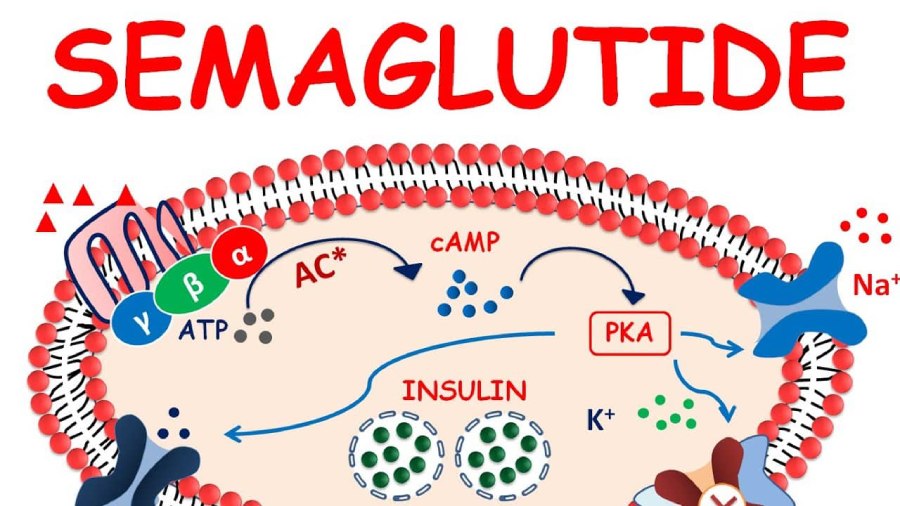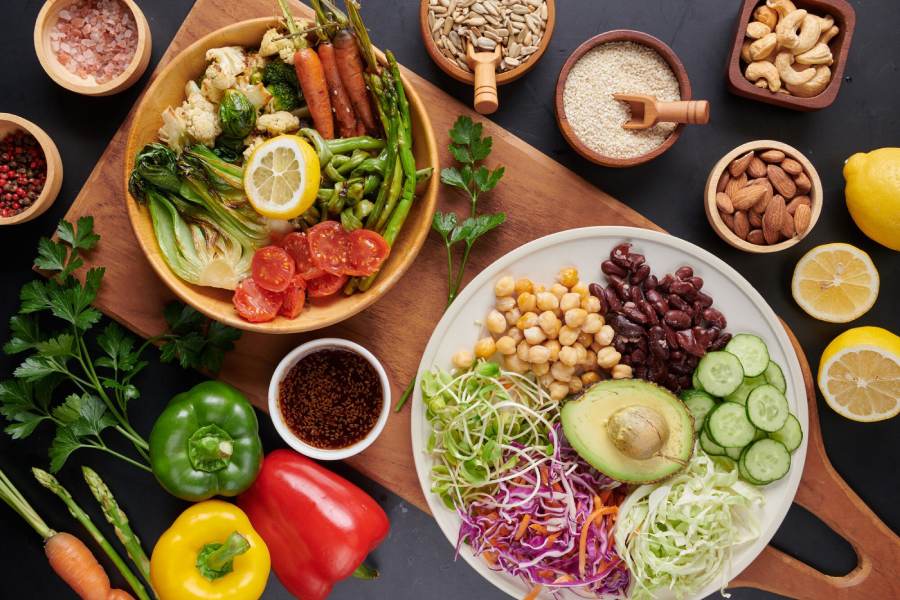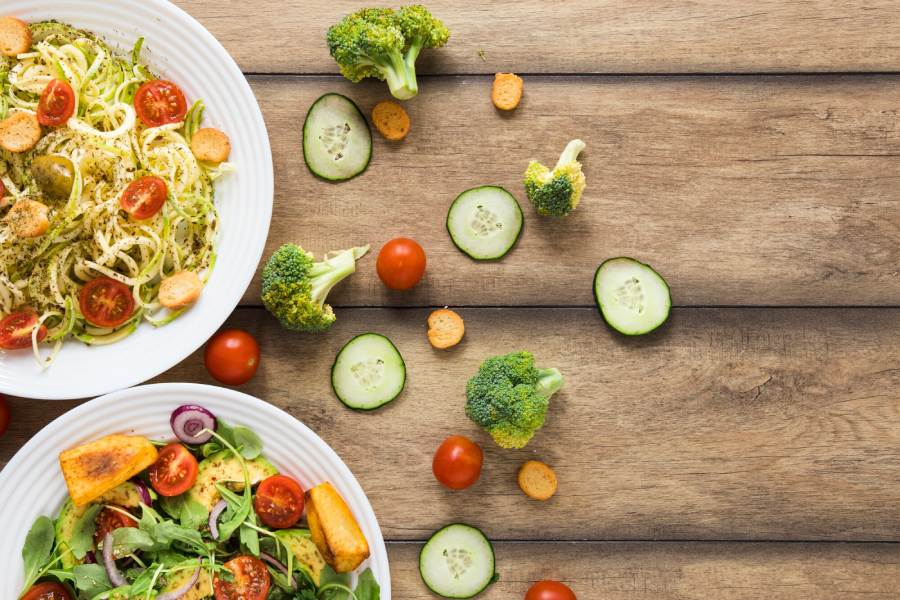Semaglutide Meal Plan: Why Is It Important?
Semaglutide, a relatively new medication for managing type 2 diabetes, has also been approved as an effective remedy for obesity and a means of weight loss. It works fine by itself, but as you know, each medication has certain side effects.
Moreover, maintaining the therapeutic results gained, and the achieved body mass can be challenging. To achieve the best possible results of Semaglutide therapy and avoid returning to what you wanted to eliminate by all of your heart, remember to follow the specific semaglutide diet plan while taking this medication course.
Semaglutide’s mechanism of action

Behind this wonderful medication’s action is a simple mechanism, and its effectiveness might be owed to this simplicity. Semaglutide is a GLP-1 receptor agonist that promotes the secretion of GLP-1, a hormone that regulates appetite and food intake.
The Semaglutide medication has three promoting appetite and blood sugar level decrease factors at once:
- GLP-1 hormone
- Insulin
- Glucagon
Still, taking this drug alone, whatever its components and mechanism of action, cannot guarantee that you will achieve your goals. First, the medication should be of high quality, and second, you should have a special Semaglutide diet plan and follow it.
The diet plan on Semaglutide
Semaglutide becomes the most effective only when accompanied by a healthy Semaglutide diet plan. Eating nutritious food in this case can assist in eating less and prevent overeating, which would avert gaining weight back later.
Also, though Semaglutide brings the food intake down, it could lead to gastrointestinal side effects such as gastric pain, bloating, and nausea. Following your Semaglutide diet plan accurately could prevent those side effects and boost weight loss outcomes.
High-protein foods like lean meats, fish, nuts, seeds, legumes, and grains are considered the basic elements of the Semaglutide meal plan. They contain vital amino acids, which are the main nutrients required for the makeup of muscle tissue and energy.
The most advised food during Semaglutide therapy in brief

While taking the semaglutide medication aimed at weight loss, it’s recommended to follow these points of Semaglutide meal plan with the utmost diligence:
1. Limit your sugar consumption. Avoid foods high in sugar to prevent increases in blood sugar levels, which could literally cancel your weight loss.
2. Consume rich in nutrients products. Eating nutrient-rich products can aid in preventing side effects like bloating, nausea, or stomach pain, aside from building new tissues.
3. Drinking enough water. Drinking enough or even plenty of water easily prevents constipation and is the #1 advice for your Semaglutide diet.
4. Seeds and nuts snacking. Eating seeds can really make you feel satiated and nurture your body with indispensable minerals on Semaglutide diet.
5. Eat more non-starchy vegetables. These vegetables are low in calories but at the same time they are nutrient-dense and can satiate your body with vitamins, antioxidants, and indispensable minerals necessary during diet while on Semaglutide.
6. Eat smaller portions. This medication slows down your digestion, that’s why you can prevent gastrointestinal symptoms simply by limiting your meal sizes, and it’s a particular point of the meal plan for Semaglutide.
And now we will consider the most cornerstone points of the diet for Semaglutide in more detail:
1.Protein
When you take Semaglutide, protein is especially crucial for the Semaglutide weight loss diet plan as it helps control weight, regulate appetite, muscle mass preservation and blood sugar control.
Here is the shortlist of foods rich in protein that can be especially helpful for those taking the medication:
1. Lean Proteins: chicken, turkey, fish, white fish, as well as plant-based proteins such as quinoa, lentils, or soy.
2. Seeds and nuts. Such products as pumpkin seeds, hemp seeds, walnuts, or almonds can be of an extreme help too.
3. Sources of protein that are low in fat. Here we can mention egg whites, low fat dairy products and tofu.
2. Complex carbohydrate

List of Complex Carbohydrate-Rich Foods Suitable for Consumption during the Semaglutide therapy:
1. Really Complex Carbohydrates: Brown Rice, Oats, Quinoa, Whole Wheat Pasta
2. Fruits and vegetables rich in nutrients: Berries, Chickpeas, Grapefruit, Greens (Spinach, Kale)
3. Seeds and Nuts: Walnuts, Pumpkin Seeds, Hemp Seeds.
3. Veggies snacks, fruits, and nuts
You should never ignore this food when you’re taking Semaglutide because:
- It’s about Low-Glycemic Index: Fruits, such veggies as greens, lentils, chickpeas, grapefruit, and berries will help you reduce uncomfortable gastrointestinal symptoms while taking Semaglutide.
- Healthy Protein Fats and Fiber: Nuts and seeds are rich in healthy fats, protein, and fiber.
- Rich in nutrients: Seeds, nuts, fruits, and vegetables have numerous vitamins, minerals, fiber, and healthy fats.
What foods you should exclude while Semaglutide intake
Here’s what you should avoid in foods when you’re on Semaglutide intake:
1. High Glycemic Foods: Products with a high glycemic index such as peas and corn carrots are better to avoid as they raise the level of blood sugar, and can influence insulin release in the body.
2. Products with Added Sugar and Refined Carbohydrates: Better exclude from meal plan foods that contain sugar and high concentration of fats or saturated fats like refined carbohydrate.

3. Alcohol: Semaglutide slows down digestion and thus alcohol won’t be digested property and most likely its consumption will lead to stomach irritation.
4. Excessive Salt: You can boost the medication’s effect if you limit salt consumption.
Follow these dietary considerations and this will allow you to improve the medication’s effect and the health outcomes.
It’s also worthy to look closer at the warnings of improper food consumption. Further, we provide the more detailed explanations:
1.Low-nutrient foods and drinks
It’s better to avoid low-nutrient foods and drinks when taking Semaglutide because:
1. The Risk of Dehydration: Semaglutide can cause low water intake that can lead to dehydration. This, in turn, can exacerbate dizziness, fatigue, constipation, and malaise. These might lead to more serious conditions like acute kidney injury and death.
2. Blood Sugar Control:The body’s insulin response may be abolished after ingestion of large amounts of sugary and low-nutrient foods and drinks, decreasing the ability of semaglutide to reduce blood sugar levels.
2. Sugary snacks and beverages
Sugary snacks and beverages should be avoided during Semaglutide therapy for these known reasons:
1. Spikes of blood sugar levels: Sugary sweets and drinks send blood sugar levels upward fast, and this can turn off the drug’s function of normal blood glucose regulation/control.
2. The Weight Loss effect endangerment: Eating energy-dense sweet foods can boost weight gain.
3. The Risk of Dehydration: Sugary beverages may cause dehydration, which can make side effects considerably worse: such as nausea, constipation, and fatigue. Furthermore, dehydration may eventually deteriorate health overall.
3.Fried and fatty foods
Fatty and fried foods should be avoided during Semaglutide therapy because:
1. They provoke Gastrointestinal Side Effects:. Eating fatty and fried foods can worsen known unpleasant gastrointestinal feelings.
2. Impact on Weight Loss: Such products might just prevent effects of weight loss that would have been brought about by the medication.
3. Balancing Blood Glucose Levels: Fats and oils from the fried foods can make it difficult for the drug to regulate insulin release, and this makes the drug less effective.
Semaglutide Sample Meal Plan
A sample meal plan for individuals taking Semaglutide can be comprised of these ingredients:
Breakfast:
- Scrambled eggs with tomatoes and spinach
- Whole-grained toast
- Fresh fruits or berries
Lunch:
- Quinoa or brown rice
- Grilled chicken or tofu salad with mixed greens, cucumbers, and bell peppers
- Light vinaigrette dressing
Snack:
- Greek yogurt with mixed seeds and nuts
Dinner:
- Baked salmon or lentil stew
- Steamed vegetables (e.g., broccoli, cauliflower, or asparagus)
- Sweet potato or whole grain pasta
Lifestyle tips for making stable weight loss results on Semaglutide
Here are some lifestyle tips to enhance weight loss results while taking Semaglutide:
Regular Physical Activity: Switch to light cardio workouts and strength training exercises, focusing on weight-loss and overall healthiness instead of maxing out on gym practices.
Healthy Eating Habits: Make simple meals from red meats & chicken, carbohydrates from whole grain & veggies, fats from oils & nuts, and avoid sugary snacks and processed foods.
Control Your Portions: Comply with the portions so as the calorie intake be kept in check and the weight reduction goals attained well.
Drink Water: Make it your habit to drink the right amount of water, ensuring that your body is well hydrated for proper functioning of your organism.
Manage your stress: Implement anti-stress activities, such as mindfulness, meditation, or yoga, and evade emotional eating.
Regular Monitoring: Track what you eat, be active and track your weight. This will keep you motivated enough to keep moving on.
Epilogue
While on Semaglutide, practicing a specific diet is of extreme significance. Medical research has shown that individuals who use Semaglutide and together with this follow the diet plan and make exercises usually lose weight at considerably higher rates.
Healthy lifestyle which makes Semaglutide weight loss most successful consists of a personalized diet plan of nutrient-rich products, such as chicken breast, oatmeal, and lots of vegetables.

